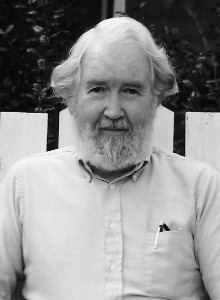 18 Feet |
 8 Feet |
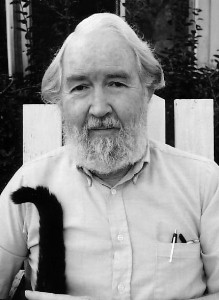 2.5 Feet |
|---|---|---|
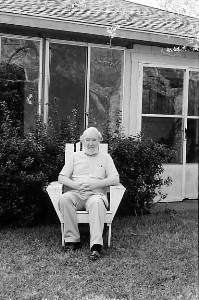 50MM LENS at 18 Feet Full Frame |
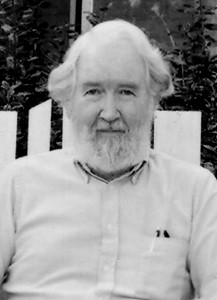 50MM LENS at 18 Feet Cropped and Enlarged |
 150MM LENS at 18 Feet (Zoom Telephoto) |
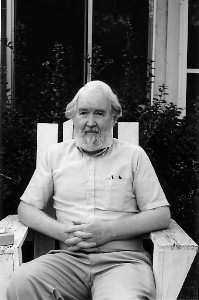 50MM LENS at 8 Feet Full Frame |
 50MM LENS at 8 Feet Cropped and Enlarged |
 80MM LENS at 8 Feet (Zoom Telephoto) |
 50MM LENS at 2.5 Feet Full Frame |
 50MM LENS at 2.5 Feet Reduced in size. - - |
 28MM LENS at 2.5 Feet - |
ARCHITECTUAL PHOTOS
Distant, Medium, and Close Views
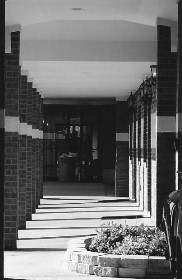 Distant |
 Medium |
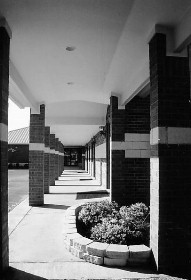 Close |
|---|---|---|
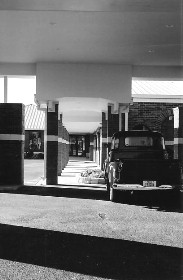 Distant with 55mm Lens Full Frame |
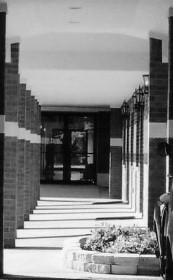 Distant with 55mm Lens Cropped |
 Distant with 200mm Lens (Zoom Telephoto) |
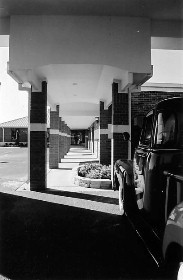 Medium with 55mm Lens Full Frame |
 Medium with 55mm Lens Cropped |
 Medium with 80mm Lens (Zoom Telephoto) |
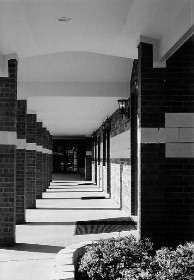 Close with 55mm Lens Full Frame |
 Close with 55mm Lens Reduced to match |
 Close with 28mm Lens Full Frame |
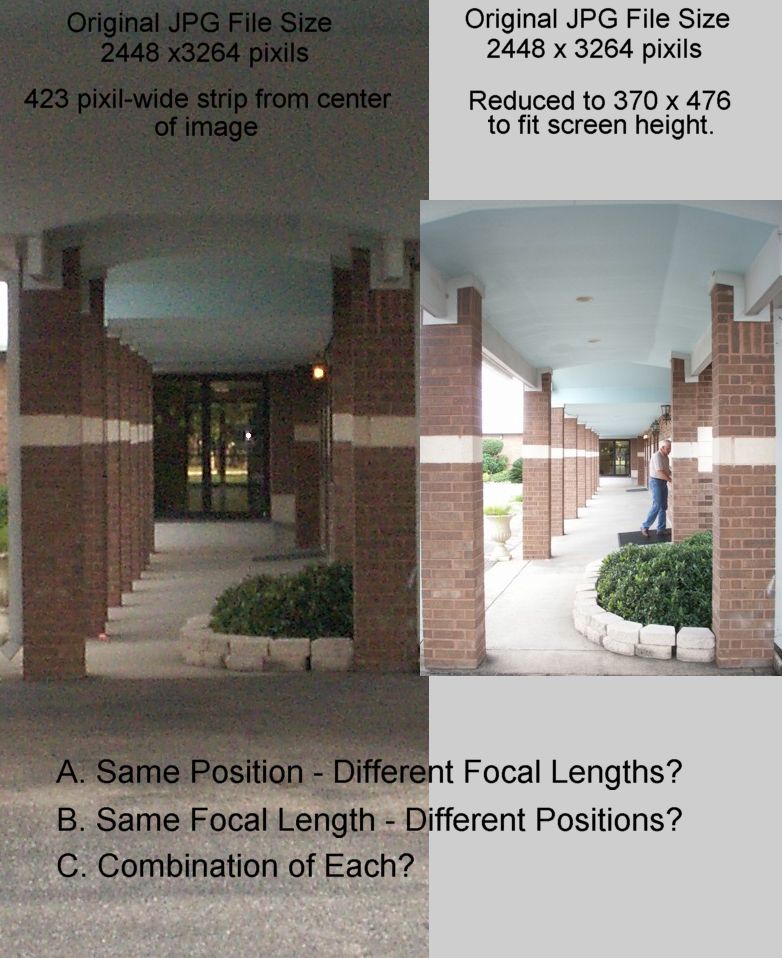
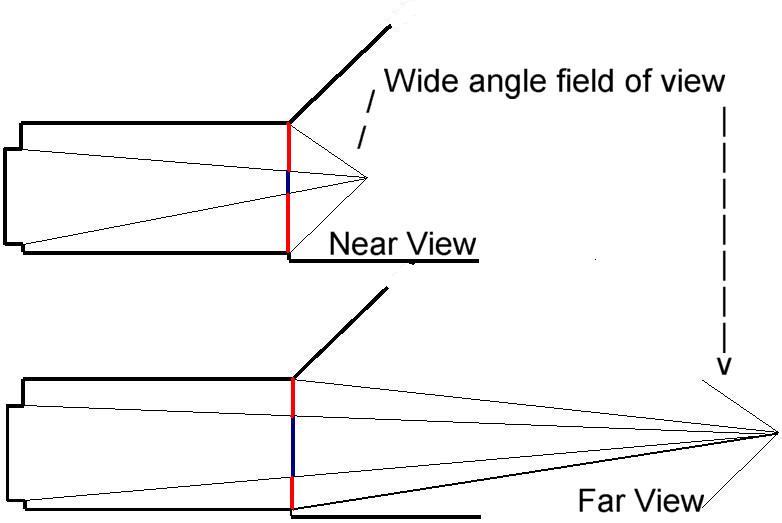
|
This is how I think visual perspective works. I've never taken art or perspective drawing so this just describes what I think we see in photographs. In these two sketches I've imagined an angle for the FOV of some wide-angle lens. It is used here to photograph a near object, such as the entrance to a columned walk, and a far object, such as a door at the end of the walk. When the lens (camera) is near the entrance of the walk, the entrance takes up the entire field of view and the far door takes up a much smaller angle. The result is that the image produced by the entrance has a large area, shown in red here, and a small area for the far door, indicated here by the blue. With the camera and the same lens much further away, the entrance takes up much less of the field of view (the red lines in the lower sketch). However, the angle to the far door, although smaller than the angle from the near location, is much closer in size to the angle at the entrance to the walkway. So the far door looks much larger (blue) relative to the entrance (red) although it is a much smaller area of the total image. Of course, the entrance is a much smaller area of the total field of view as well. If a telephoto lens is used instead of the wide-angled lens, the same angles still exist for the entrance and the far door. The only difference is that the FOV angle would be less. A zoom lens with the right zoom range could be adjusted so that its field of view would equal the angle of the walkway entrance from that same "far" distance. Just imagine the wide angle illustrating the FOV in the sketch getting smaller and smaller until it becomes congruent with the angle to the entrance. Those other angles won't change in the process of "zooming" and they will still have the same relative "size" as shown in the sketch. |
Scene photographed using a 28mm lens. Cropped to form a panoramic view.


|
Here is the same scene from the same distance using a 55mm lens on the same SLR 35mm film camera. Two photos were taken and scanned and the digital images were digitally stitched to make one panoramic image almost identical to the one made with the 28mm lens. A little vertical distortion is evident in the 28mm image and, of course, the 'stitch' line is visible between the 55mm images. A little more care in matching the light intensity of the images would have made the stitch less obvious. |